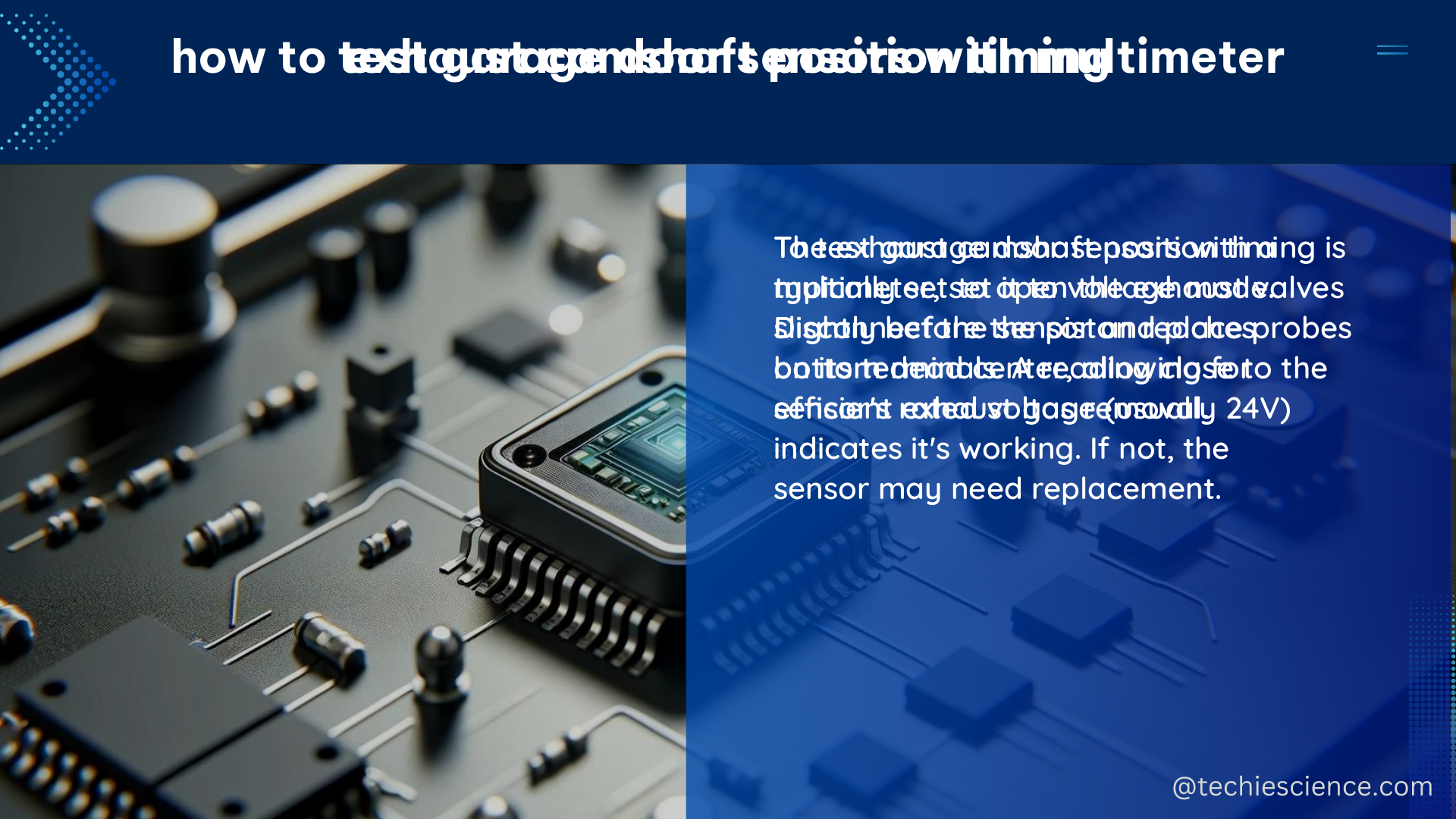The exhaust camshaft position timing is a critical component of an engine’s performance, responsible for controlling the timing of the exhaust camshaft. This system directly impacts the engine’s power, fuel efficiency, and emissions, making it a crucial aspect of vehicle maintenance and repair.
Understanding Exhaust Camshaft Position Timing
The exhaust camshaft position timing is typically controlled by the engine control module (ECM) or powertrain control module (PCM), which sends pulse width modulated (PWM) signals to the camshaft position actuator solenoid. The ECM or PCM controls the duty cycle of the solenoid, which in turn controls the advance or retard of the camshaft.
The camshaft position actuator solenoid controls the oil flow that applies pressure to advance or retard the camshafts. This system is designed to optimize the engine’s performance by adjusting the timing of the exhaust camshaft based on various operating conditions, such as engine speed, load, and temperature.
Diagnosing Exhaust Camshaft Position Timing Issues

One of the most common issues related to exhaust camshaft position timing is the P0014 diagnostic trouble code, which indicates that the camshaft timing is over-advanced. This can be caused by a variety of factors, including:
- Dirty or low engine oil
- Faulty camshaft position sensor
- Malfunctioning oil control solenoid
- Restricted oil flow to and from the camshaft phasers
To diagnose and fix the P0014 code, it is recommended to follow the manufacturer-specific pinpoint test provided in the repair manual for the vehicle. This process may require advanced tools and expertise, so it may be necessary to bring the vehicle to a dealer technician if the problem cannot be resolved by the owner.
Technical Specifications and Measurements
The exhaust camshaft position timing system typically operates within the following technical specifications:
- Camshaft Position Actuator Solenoid Duty Cycle: 0-100% PWM
- Camshaft Position Actuator Solenoid Resistance: 10-20 ohms
- Camshaft Position Sensor Voltage: 0-5 volts
- Camshaft Position Sensor Air Gap: 0.5-1.5 mm
It is important to note that these specifications may vary depending on the make, model, and year of the vehicle. Always refer to the manufacturer’s service manual for the specific technical details of the exhaust camshaft position timing system.
Maintaining Proper Exhaust Camshaft Position Timing
To ensure proper exhaust camshaft position timing, it is essential to maintain the vehicle’s oil level and quality. Low or dirty oil can lead to restricted oil flow, which can cause issues with the camshaft phasers and the overall timing of the system.
Additionally, it is important to address any issues with the camshaft position sensor, oil control solenoid, or camshaft phasers as soon as they arise. Ignoring these problems can lead to more severe issues, such as engine performance problems, increased emissions, and decreased fuel efficiency.
Conclusion
The exhaust camshaft position timing is a critical component of an engine’s performance, and understanding its technical specifications and maintenance requirements is essential for ensuring optimal engine operation. By following the manufacturer-specific diagnostic procedures and maintaining the system’s components, vehicle owners and technicians can prevent and resolve issues related to exhaust camshaft position timing, ultimately improving the overall performance and efficiency of the vehicle.
References:
– Chevyhhr.net – Code P0014 Cam Position Performance
– AutoZone – P0014 B Camshaft Position Timing Over-Advanced or System Performance Bank 1
– JustAnswer – P0014 Code Exhaust Camshaft Position Timing Advanced

The lambdageeks.com Core SME Team is a group of experienced subject matter experts from diverse scientific and technical fields including Physics, Chemistry, Technology,Electronics & Electrical Engineering, Automotive, Mechanical Engineering. Our team collaborates to create high-quality, well-researched articles on a wide range of science and technology topics for the lambdageeks.com website.
All Our Senior SME are having more than 7 Years of experience in the respective fields . They are either Working Industry Professionals or assocaited With different Universities. Refer Our Authors Page to get to know About our Core SMEs.